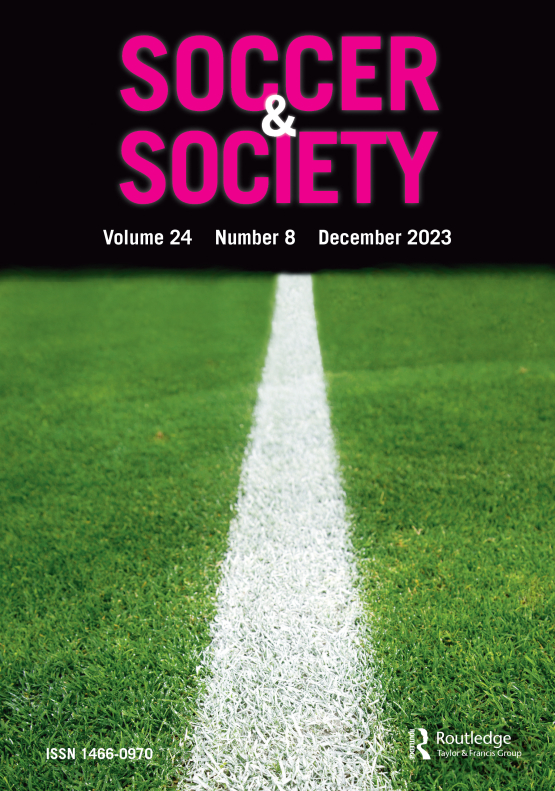Submit a Manuscript to the Journal
Soccer & Society
For a Special Issue on
Who are ordinary football supporters? A comparative analysis
Abstract deadline
Manuscript deadline

Special Issue Editor(s)
Professor Jean-Michel De Waele,
CEVIPOL, Free University of Brussels, Brussels, Belgium
jean-michel.de.waele@ulb.be
Who are ordinary football supporters? A comparative analysis
Football, the world’s most popular sport, plays a central role in the lives of hundreds of millions of people. It inspires deep emotional attachment to a team or club, shaping individual and collective identities. While academic literature has extensively explored this world of football supporters, it has often focused on the most spectacular and visible forms of fan culture, particularly ultra groups. Conversely, the figure of the ‘ordinary’ fan, despite representing the vast majority, remains relatively unexplored.
Some major contributions, such as those by Richard Giulianotti, have outlined a typology of supporters in the age of globalization, highlighting the diversity of practices and profiles across cultural spaces - from European strongholds to South American stadiums and emerging markets in Asia. In this context, several questions arise: are the once-predominant rooted supporters still representative of today's audiences? Is there still a typical supporter profile for each club? Or are we now faced with hybrid communities with heterogeneous expectations and forms of engagement?
These questions are pressing in the face of increasingly fragmented forms of support. In the past, fans mainly supported a local club, often the one in their town or region. Today, the global media coverage of football – first via television, then digital platforms – has profoundly redefined practices. Fans can now follow, cheer on and even identify with clubs located thousands of kilometres away, without ever setting foot in a stadium.
A particularly striking phenomenon is that of multi-supportership: more and more individuals support several clubs, sometimes from different countries, depending on the competitions, players or perceived values. This trend, which is particularly visible in regions of the world without a major national championship, calls into question the sustainability of the traditional link between fan culture and territorial roots. Will younger generations, who are hyperconnected and immersed in a globalized digital world, continue to turn to clubs in their region? Or are we witnessing a reconfiguration of the logic of identification and belonging?
In this context, the notion of loyalty also deserves to be re-examined. Historically rooted in local identities, this loyalty is now subject to new pressures: diversification of supply, increased mobility, global marketing strategies of clubs, etc. In a world where following football has become extremely accessible, how is this loyalty evolving? Is it being diluted or redefined?
To address these questions, CEVIPOL, Free Univesrity of Brussels (Université libre de Bruxelle), Brussels, Belgium, is organizing an International Conference on Who are ordinary football supporters? A comparative analysis on 11-12 December 2025. Selected papers from the conference will be published as a special issue of Soccer & Society.
Some possible avenues for reflection in this context for the authors are given below:
- Who are the ‘ordinary’ supporters in the contemporary football landscape?
- Which audiences continue to maintain a strong connection with their local club despite the globalisation of football as a spectacle?
- How are multiple identities constructed and evolved among supporters?
- What approaches are clubs developing to build and maintain a loyal and committed fan base?
- Can we identify a typical fan profile based on a club's geographical, economic or symbolic positioning?
- What regional specificities can we observe (Latin America, Africa, Asia) in the evolution of forms of fan culture?
- Do generational dynamics influence football consumption patterns? Are we seeing a global standardisation of practices?
- Is the phenomenon of multi-supportership an adaptive response to new market dynamics or a threat to the viability of clubs with lower visibility?
Other related or emerging ideas are also welcome.
Submission Instructions
Submissions must follow Soccer & Society’s submission guidelines and will undergo a rigorous peer-review process. Papers should be maximum 8000 words including notes and references, abstract and key words.
Proposals or abstracts of 250-300 words are to be submitted to Prof. Jean-Michel De Waele (jean-michel.de.waele@ulb.be) by 15 September 2025. The organizing committee of the conference /guest editor will then communicate the decision by 1 October 2025 and invite selected authors to present their papers at the International Conference on the theme to be held at CEVIPOL, Free Univesrity of Brussels, Brussels, on 11-12 December 2025 and submit a full manuscript by 9 January 2026.
Key Deadlines
15 September 2025 - authors to submit their abstract proposals (250-300 words, author(s) and affiliations) to the guest editor via email
1 October 2025 - intimation to authors of selected abstracts
9 January 2026 - submission of full papers to the guest editor
30 June 2026 - submission of all papers to the journal editor after review and revisions

